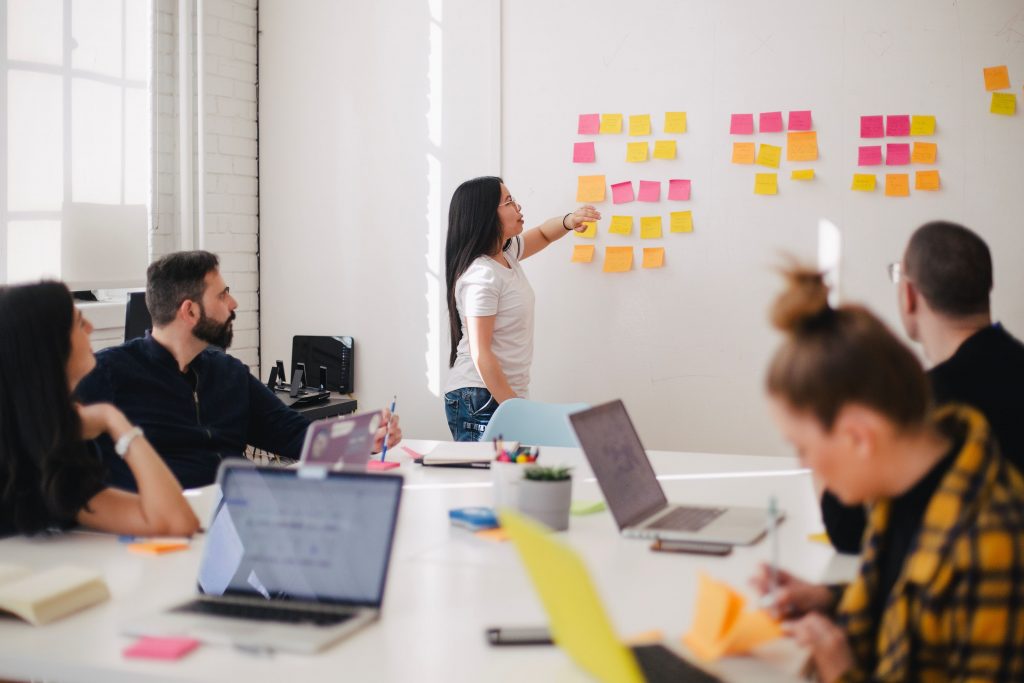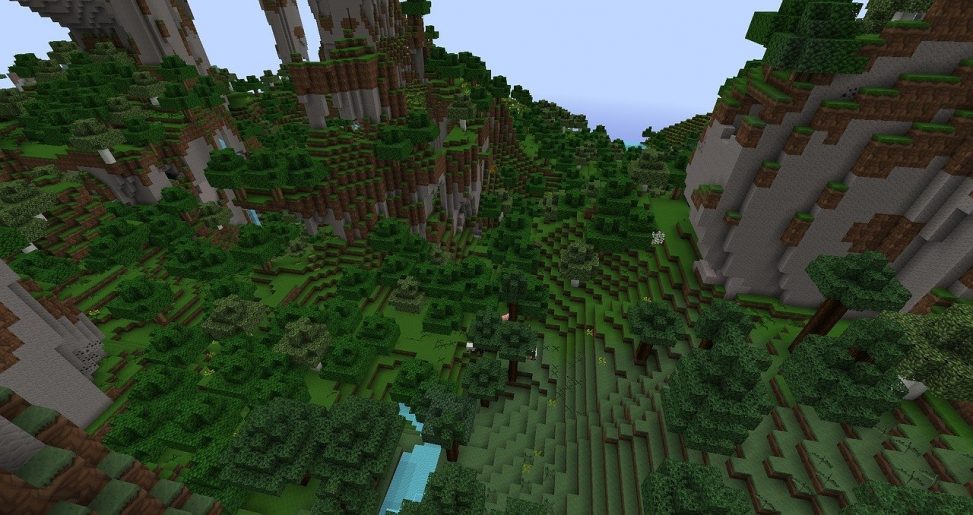This week we had the pleasure of having Heidi James, several of her Colquitz Middle School students, and one Spectrum Community School student come to our class and teach us about Minecraft. We learned that Minecraft is beginning to be integrated into classrooms for educational purposes, and that there is even a special education edition of the game called Minecraft EDU. The Minecraft Education twitter is a fantastic resource that outlines ways in which students are actively using the game to supplement and further their learning. Additionally, anything relating to educational Minecraft usage can be found under #MinecraftEdu.
As we were learning the basics of how to play the game, there was discussion regarding the various educational uses. The possibilities are truly endless, but some of the main concepts that came up included…
- Learning to code
- Math (coordinates within the game are along the x-axis and y-axis, makes the concept more tangible)
Teach #fractions in a way that activates the imagination! In the lesson of the week from #MinecraftMentor @katjaborregaard, students explore fractions in real-life settings and communicate their findings through stories: https://t.co/1o2CouMurC#MinecraftEdu pic.twitter.com/4c86btnXho
— Minecraft Education (@PlayCraftLearn) November 11, 2019
- Teamwork
- Communication
- Collaboration
I guess a lot of educators look down on Minecraft because it's a game. But when you find out how it can improve learning, – guess what – it's a game-changer! #MinecraftEdu pic.twitter.com/jKgqN81fJc
— Craig McBain (@CraigMcBain) November 7, 2019
- Spelling
- Architecture
My students had a lot of fun learning about historical landmarks by recreating them in Minecraft! #MinecraftEdu pic.twitter.com/pfqYyx8ppF
— Kate Dehbashi (@Kate_Dehbashi) November 8, 2019
- Pixel art
Just a little #MinecraftEdu pixel art to end off our day. Thought I’d share @MrBPrather pic.twitter.com/vQQxKrvnVL
— Catherine D (@Catherine_D2013) November 9, 2019
- Social studies projects (building an ancient civilization)
Created an archeological dig for the students to explore. Complete with pyramid and buried temple. #Minecraftedu #MicrosoftEDU #digitalpedagogy pic.twitter.com/XuomJNqjb5
— Lindsay (@MrNewtonEDU) November 11, 2019
- An alternative to dioramas in any subject
- Biology
- Teaches about early survival skills (safety, hunting, gathering, cooking over a fire)
- Food facts (safe foods to eat, what needs to be cooked, etc.)
- Weather and the seasons
- Trade relationships
- Relationships among different communities
- Different types of death in early civilizations (thirst, starvation, poison, disease, etc.)
- Time of day (solar and lunar cycles)
- Sustainability (using resources as well as repopulating or reforesting)
Minecraft, code, AI and sustainability in our 2019 Hour of Code: AI for Good. Students train AI to help prevent a forest fire & bring life back to the world. #hourofcode #gbl #buildabetterworld #minecraftedu #ilovemyjob #csforgood #ai @PlayCraftLearn ⛏https://t.co/zdiGLmJ02R pic.twitter.com/W0869HM5nv
— Deirdre Quarnstrom (@Deirdre206) November 13, 2019
As evidenced by how extensive this list already is, Minecraft has vast educational potential. Not only can Minecraft aid in assisting curricular learning, but it provides fantastic opportunities for students to show their learning in a variety of ways. Students can use the program to make tangible representations of what they have learned. The teacher or class can then explore it themselves, or the student can screen record their work. Minecraft also opens a lot of doors for ELL students, as the game can be set to any language.
Additionally, there is the option for a lot of teacher control within the game when necessary. The teacher holds the ability to freeze everyone, to control what players need, what they have access to, what they can or cannot do in terms of building, destroying, or harvesting, where players are physically within the world, whether or not they can send chat messages, etc. Thus, the teacher can set the appropriate conditions for the type of activity the students are meant to be engaged with. The teacher can also enable a fly-over function where they are able to fly around and monitor student progress and behaviour.
Some of the additional key points that Heidi emphasized from the teaching perspective is that Minecraft does not have to be for all students. Similar to any form of learning, not every student has the same needs. While Minecraft might work wonders for one student, it could be frustrating and detrimental to another. Thus, it is always important to maintain some degree of student choice when it comes to using the game. Heidi also emphasized how the main core competency that Minecraft reflects is communication. The game requires a massive amount of communication between students when they are working as a group. This can be done either playing in the same room, through the chat function in the game, or students could Skype or FaceTime each other whilst playing. The major role of communication often results in opportunities for student leadership. Students can guide the players within their own team to accomplish their goals, or students can even assist other players with individual activities if they are more experienced. Thus, students are not only communicating but leading and teaching each other. Heidi also described how she often provides students with checklists or planning sheets for Minecraft activities. This keeps students focused on the specific task, as well as able to conceptualize their end goal. It was also mentioned how reflection is a key component of activities. It is important for students to be able to assess what they did and what worked or didn’t work, in order to think of ways to accomplish their goals more successfully or efficiently the next time.
Minecraft is incredibly accessible in terms of learning how to play. Tutorial worlds can be created where you are able to go through and learn all of the necessary controls and functions. Our class was put through a tutorial world, and not only were we all able to learn within an hour and a half, but we had so much fun and could immediately see where educational activities could be built into the gameplay.

Photo by You X Ventures on Unsplash
For the second half of our class, we participated in our own recreation of an Edcamp. Edcamp is a new conference model, wherein participants put forward and vote on topics they would like to explore. People can then choose the topic discussions they want to attend. There are no keynote speakers, but rather everyone attending contributes to the discussion through sharing what they know, have experienced, or are curious about.
We recreated the process by all writing down a topic that we were interested in relating to education on a post-it note. We were then given stickers to vote for our top 3. The topics with the most votes were then given a designated space to be discussed in. People were free to go to one space and stay the whole time, or move throughout spaces and discussions.
I enjoyed the process, and most of the discussion brought up valuable and practice tools and knowledge based on the fact that everything was drawn from people’s real-life experiences. Our only limitation was that our class consisted of people all in the same situation (year two of teaching education). An ideal Edcamp would consist of people from across all areas and occupations within education, in order to accumulate a wealth of diverse knowledge.
Overall, I think the Edcamp model is really conducive to a successful learning experience, and holds value for both teachers and students.
This post’s featured image is by mowenmedia on Pixabay

Leave a Reply